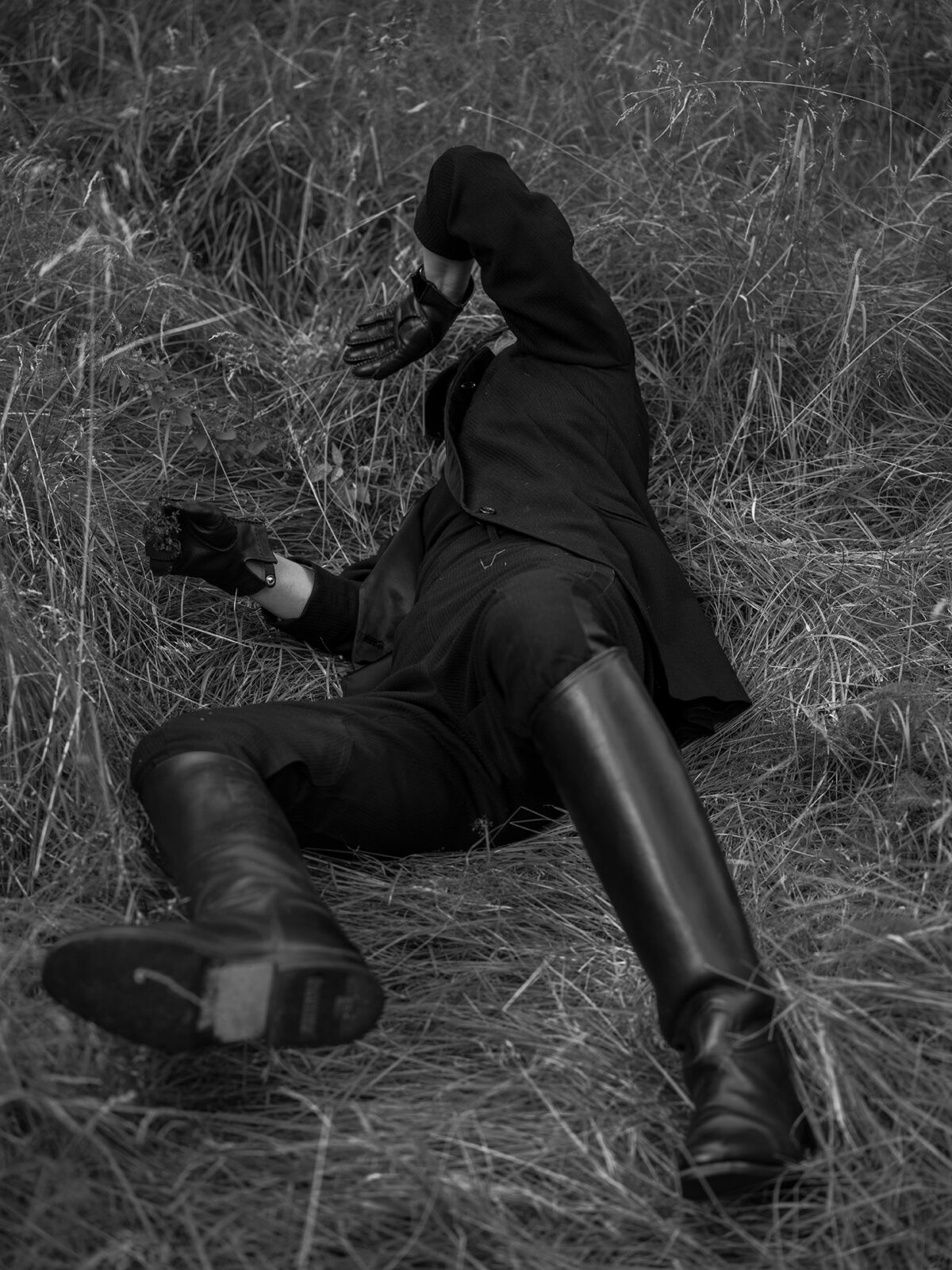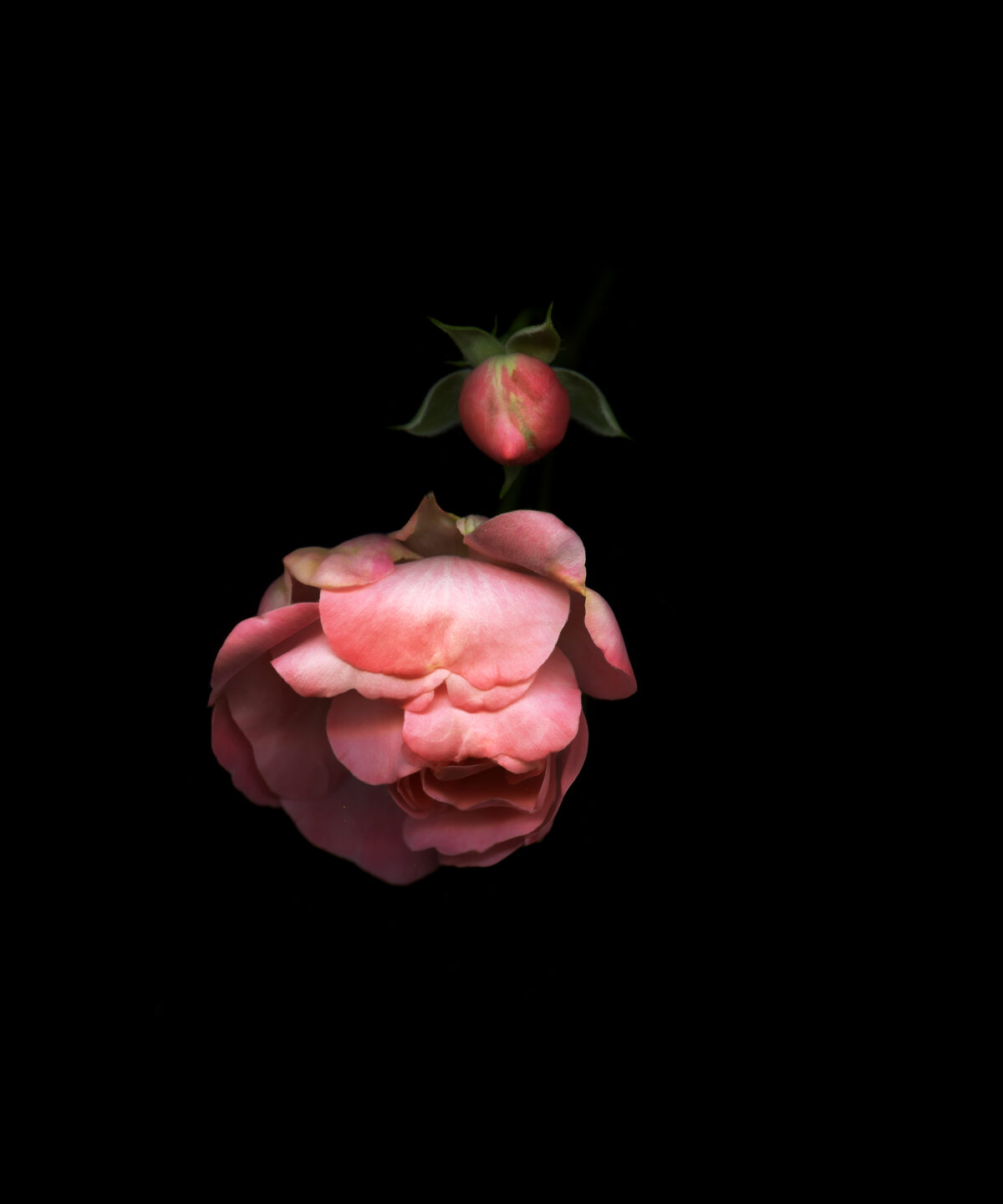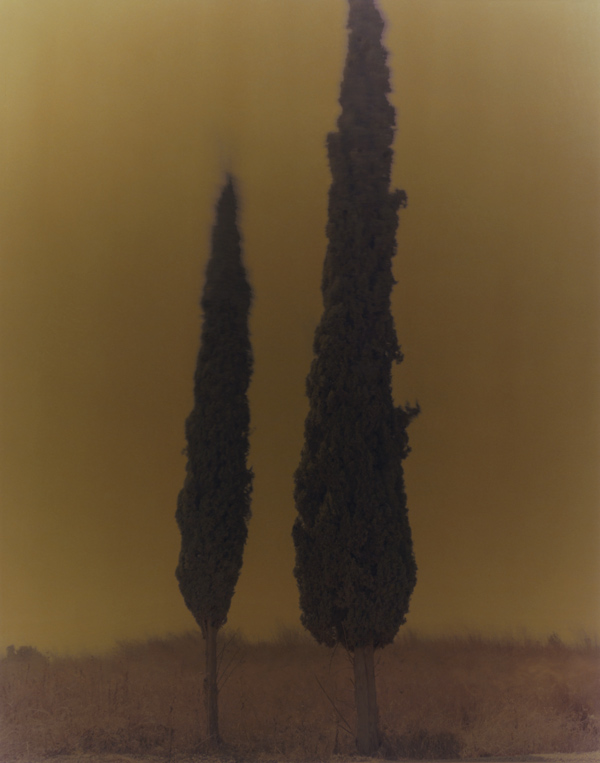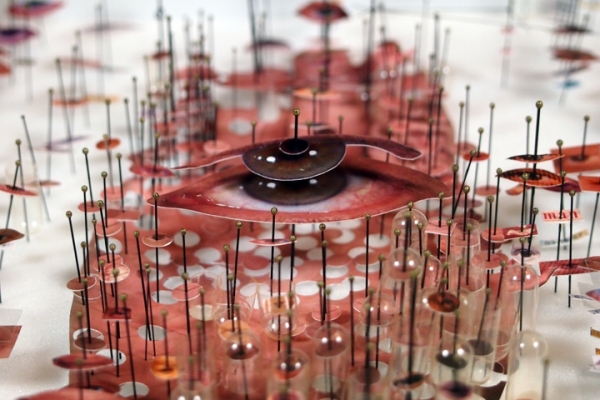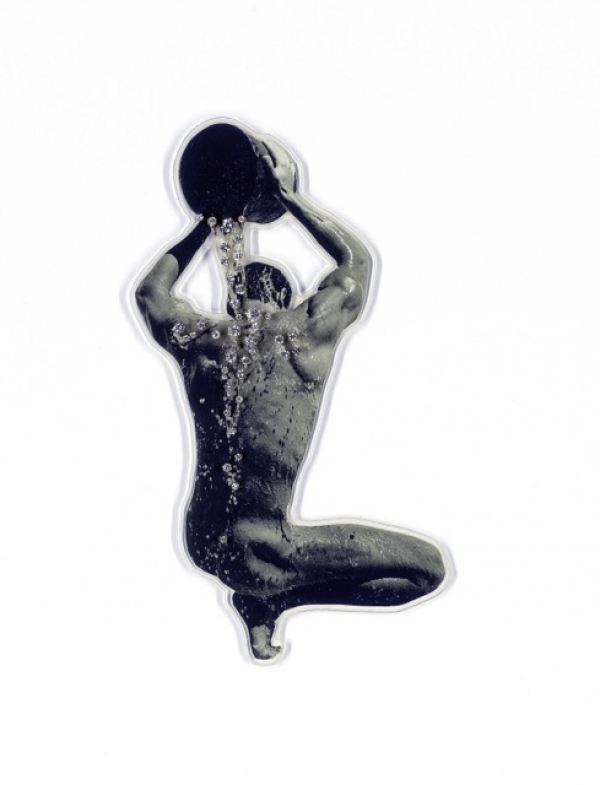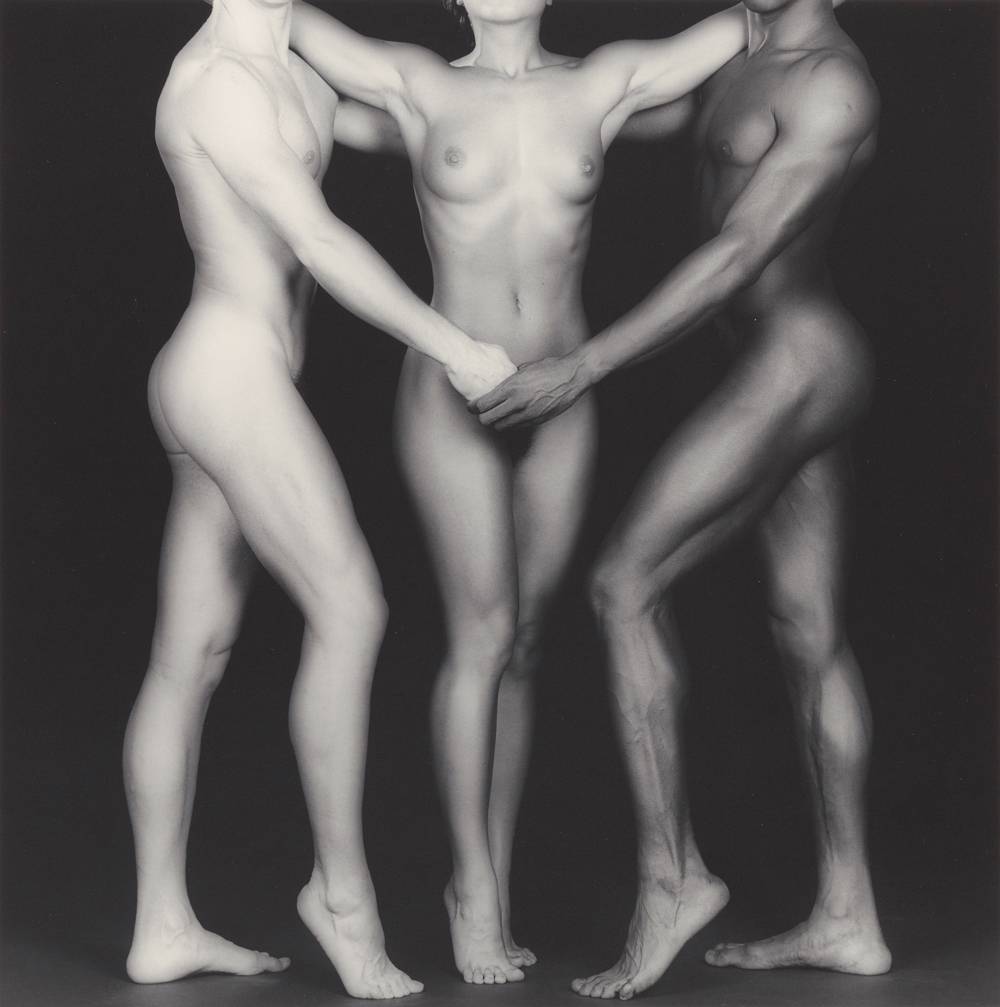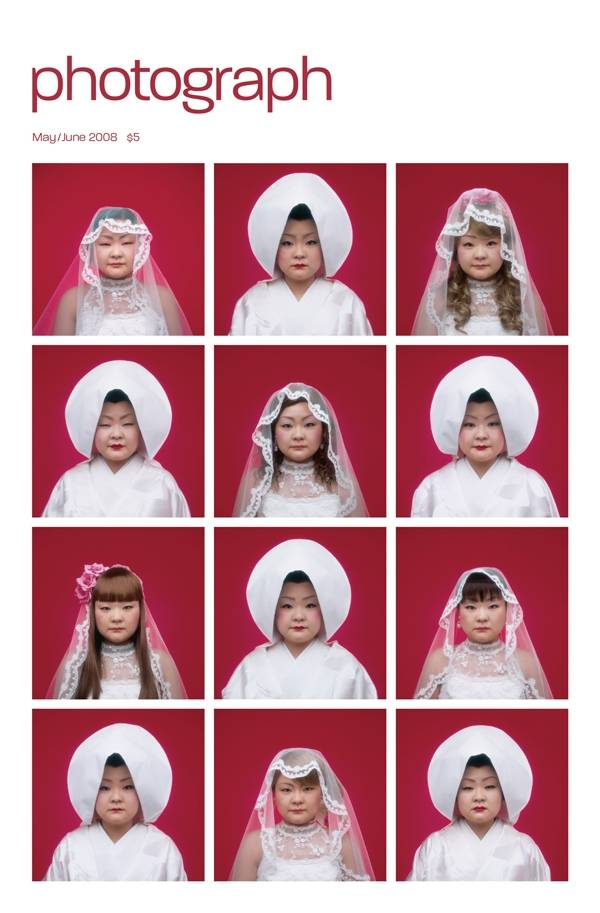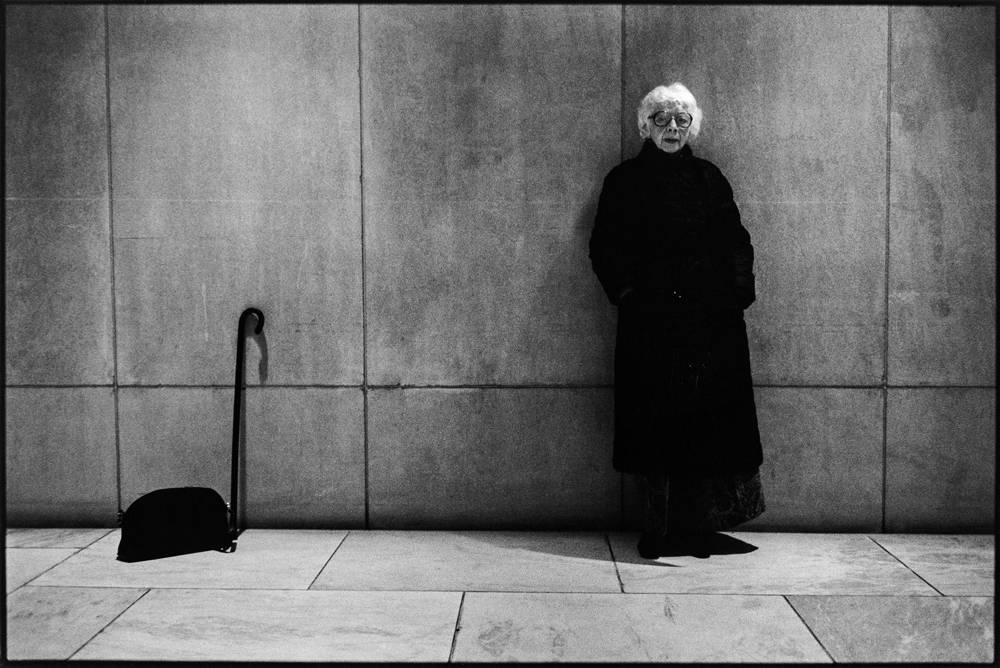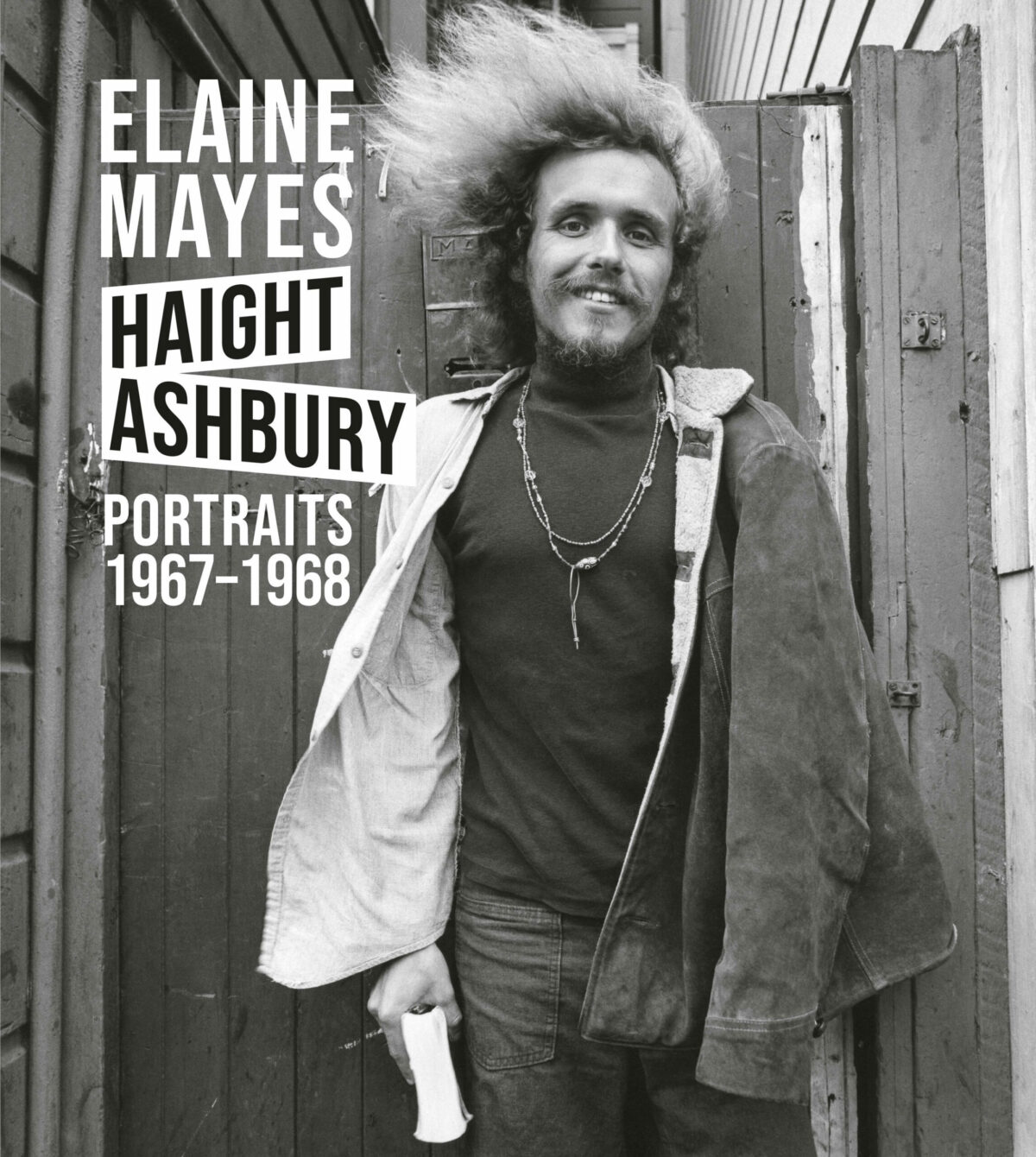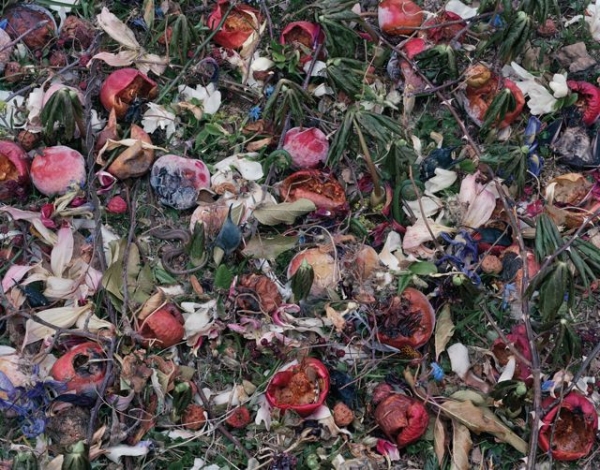

In Fallen, photographer Tanya Marcuse departs from her previous bodies of work, indexical documentations of individual trees, collections of wax anatomical and agricultural models, or archives of undergarments and armor, a 2002-2004 series she completed with a Guggenheim fellowship. There is nothing orderly about the luxuriant masses of rotting plants and flowers and decaying corpses of insects and other small creatures in Fallen, on view at Julie Saul through February 22. Assembled by Marcuse herself, each is a ground-level view of a Garden of Eden, after the Fall from Grace.
Marcuse is a graduate of Yale’s MFA program, and at first glance, these photographs brought to mind some of Gregory Crewdson’s early works from his Natural Wonder series of the mid-1990s, of backyard plants, insects, and animals in a state of partial decay. But Marcuse’s photographs are ultimately more conceptual than narrative, and her references tend toward the painterly. Hieronymous Bosch’s triptych The Garden of Earthly Delights casts a long shadow — there’s even a snake slithering through one of her photographs. The tradition of vanitas paintings comes to mind as well, with overly ripe fruits and half-eaten treats symbolizing the impermanence of life and the inevitability of death. Marcuse lives in the Hudson Valley, though, farm country in upstate New York, and that may have influenced her view of the cyclical nature of things. The dried leaves, apples, peaches, eggshells, and insect wings in her photographs form a tapestry of color and texture that suggests, more than anything, new life about to be nourished.
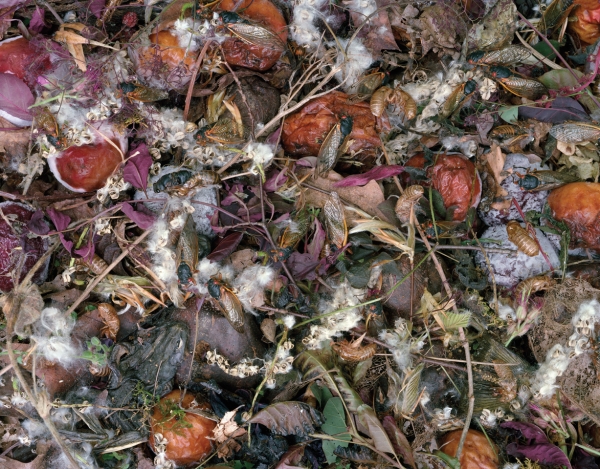

Fallen was inspired by an earlier series called Fruitless, in which Marcuse photographed fruit trees in Hudson Valley in different seasons. The platinum palladium prints each focused on a single tree, which was often surrounded by dropped fruit. In the series currently on view, Marcuse has turned from the trees to the ground below them, but her images are so vivid and rich, they favor potential over loss.



